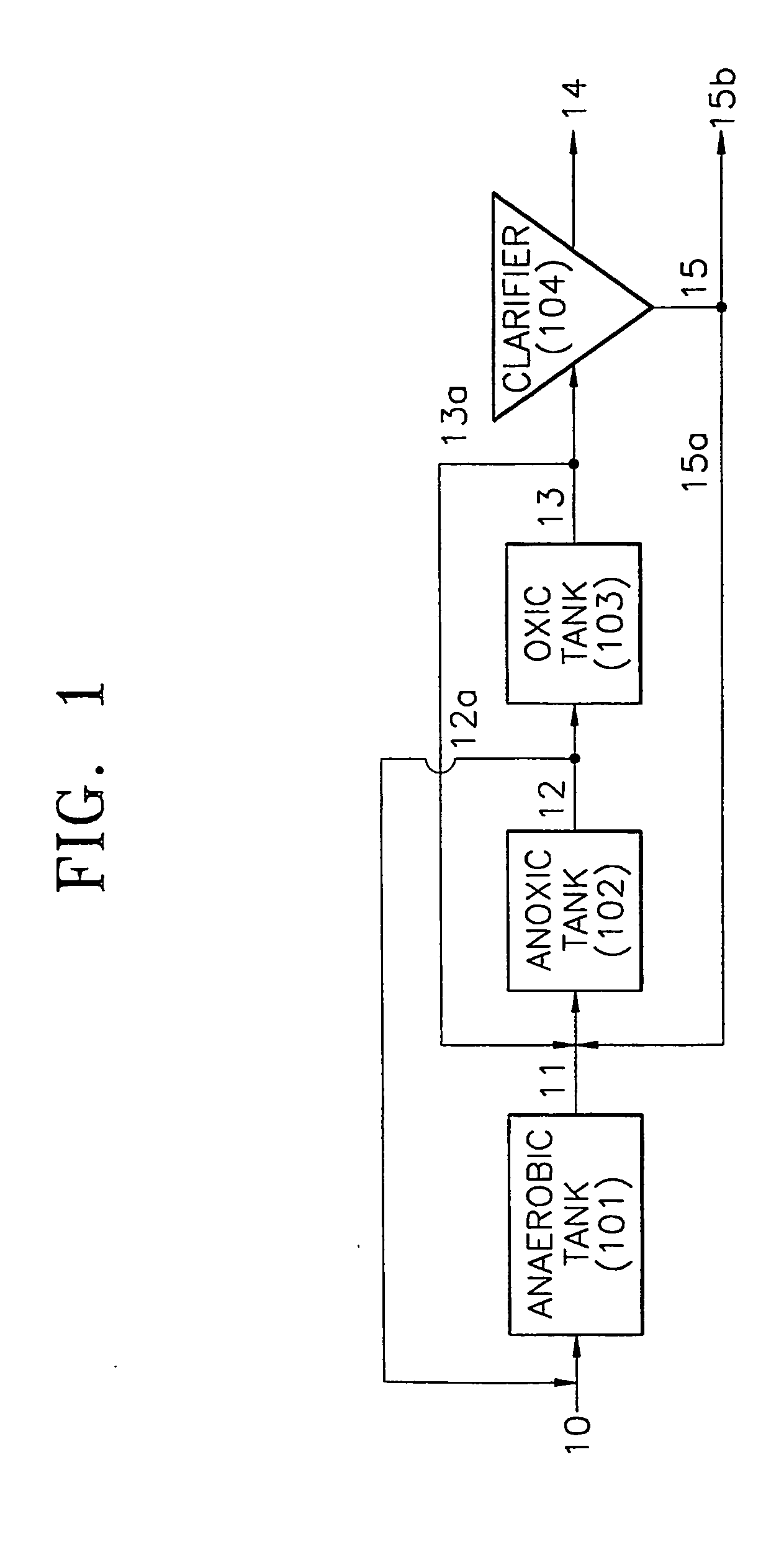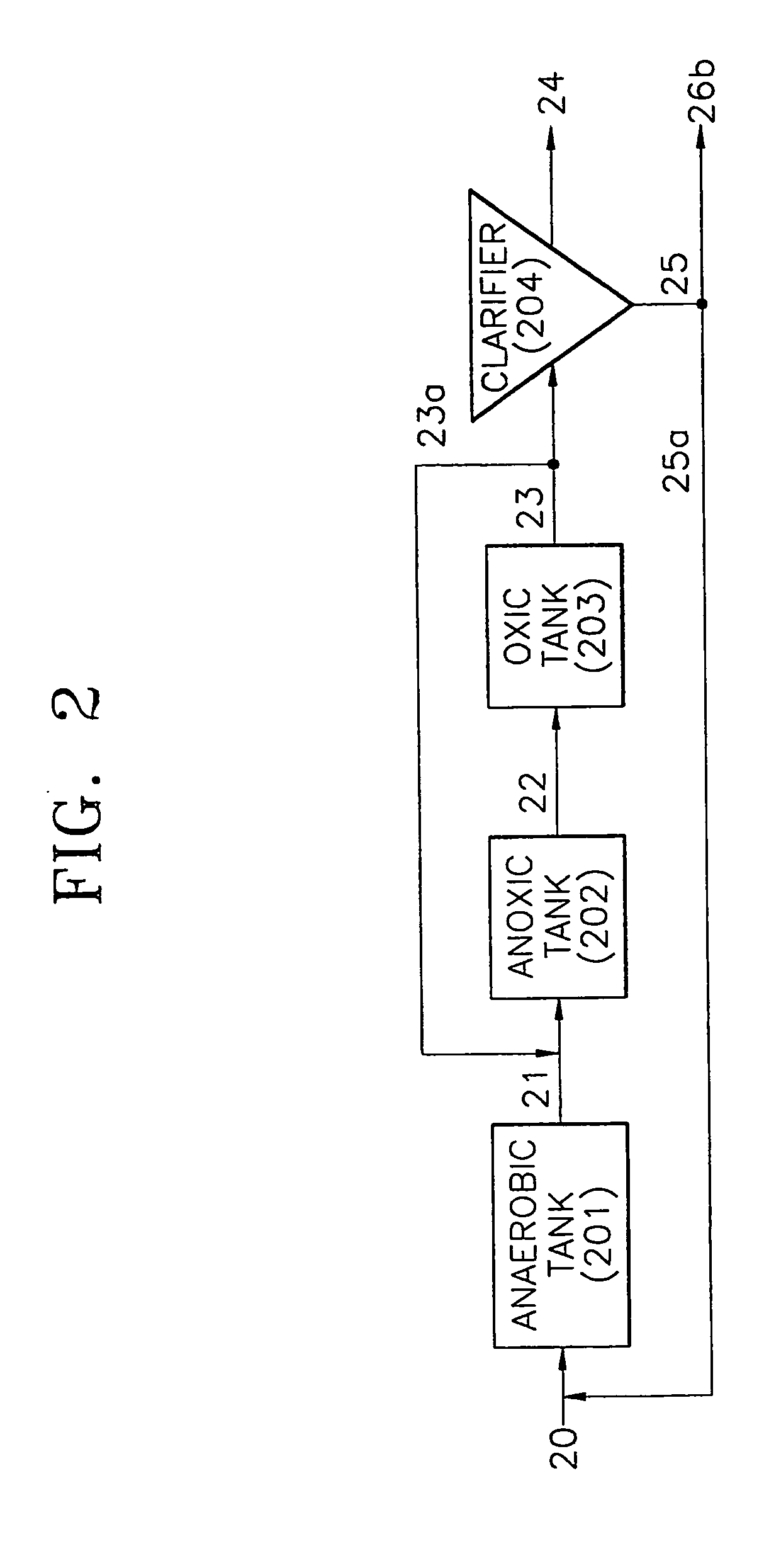Wastewater treatment apparatus and method for removing nitrogen and phosphorus
a technology of phosphorus removal and treatment apparatus, which is applied in biological water/sewage treatment, multi-stage water/sewage treatment, separation process, etc., can solve the problems of increasing difficult denitrification smoothly taking, and inability of phosphorus removal microorganisms to achieve denitrification, etc., to achieve the effect of reducing repair and maintenance costs, improving the efficiency of nitrogen and phosphorus removal, and reducing maintenance costs
- Summary
- Abstract
- Description
- Claims
- Application Information
AI Technical Summary
Benefits of technology
Problems solved by technology
Method used
Image
Examples
example 1
[0079] Each 50% by volume of influent wastewater was introduced to the anaerobic tank #2 and the anoxic tank #4. HRT of each of the pre-anoxic tank #1, the anaerobic tank #2 and the anoxic tank #4 was set to 30 minutes. 100% by volume of internally recycled wastewater QIR internally returned from the aerobic tank #5 to the dPAO tank #3, was subjected to wastewater treatment.
example 2
[0080] Except that 10%, 50% and 40% by volume of influent wastewater were introduced to the pre-anoxic tank #1, the anaerobic tank #2 and the anoxic tank #4, respectively, wastewater treatment was conducted in the same manner as in Example 1.
example 3
[0081] Except that 10%, 60% and 30% by volume of influent wastewater were introduced to the pre-anoxic tank #1, the anaerobic tank #2 and the anoxic tank #4, respectively, wastewater treatment was conducted in the same manner as in Example 1.
PUM
| Property | Measurement | Unit |
|---|---|---|
| temperature | aaaaa | aaaaa |
| temperature | aaaaa | aaaaa |
| concentration | aaaaa | aaaaa |
Abstract
Description
Claims
Application Information
 Login to View More
Login to View More - R&D
- Intellectual Property
- Life Sciences
- Materials
- Tech Scout
- Unparalleled Data Quality
- Higher Quality Content
- 60% Fewer Hallucinations
Browse by: Latest US Patents, China's latest patents, Technical Efficacy Thesaurus, Application Domain, Technology Topic, Popular Technical Reports.
© 2025 PatSnap. All rights reserved.Legal|Privacy policy|Modern Slavery Act Transparency Statement|Sitemap|About US| Contact US: help@patsnap.com



